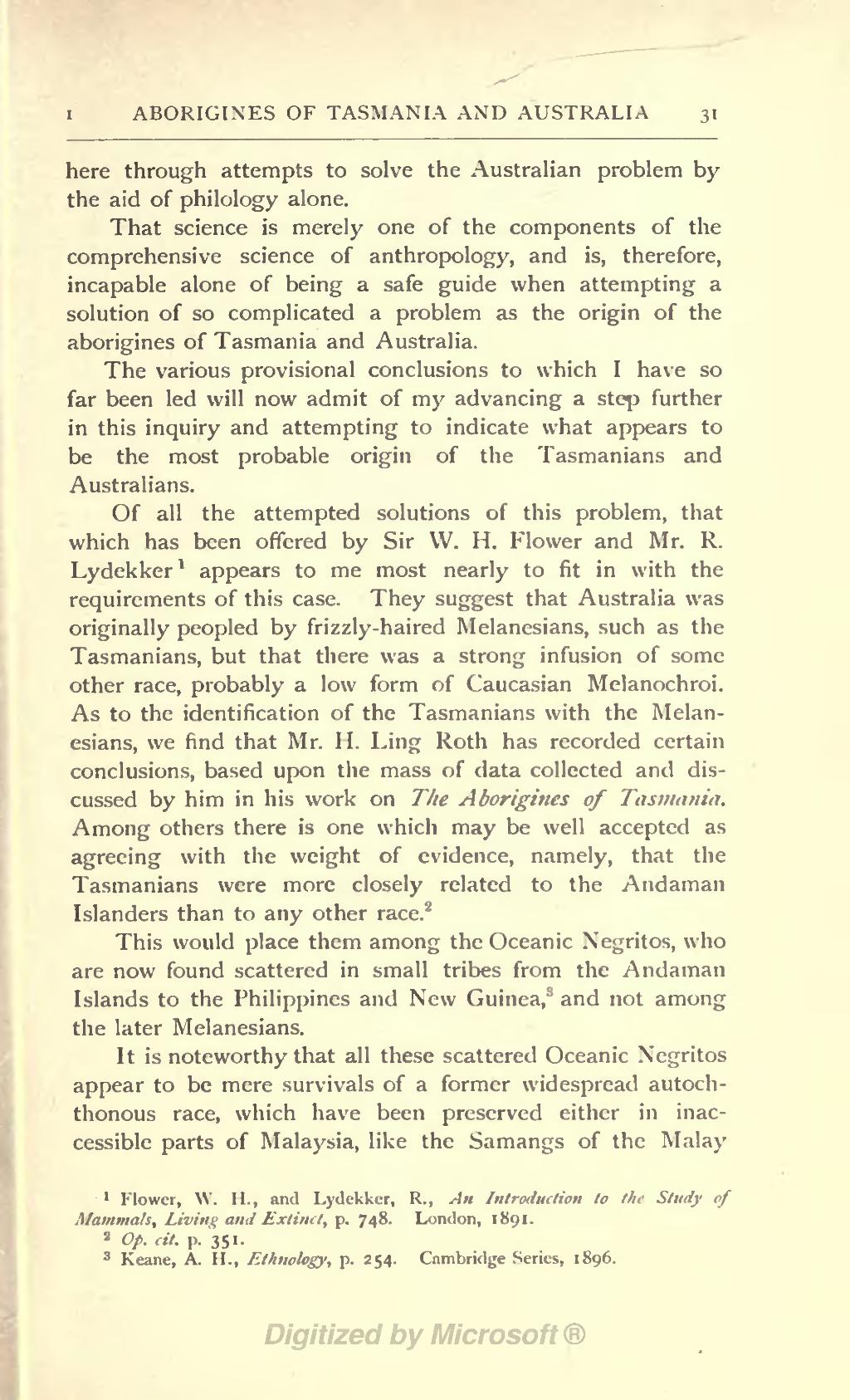here through attempts to solve the Australian problem by the aid of philology alone.
That science is merely one of the components of the comprehensive science of anthropology, and is, therefore, incapable alone of being a safe guide when attempting a solution of so complicated a problem as the origin of the aborigines of Tasmania and Australia.
The various provisional conclusions to which I have so far been led will now admit of my advancing a step further in this inquiry and attempting to indicate what appears to be the most probable origin of the Tasmanians and Australians.
Of all the attempted solutions of this problem, that which has been offered by Sir W. H. Flower and Mr. R. Lydekker[1] appears to me most nearly to fit in with the requirements of this case. They suggest that Australia was originally peopled by frizzly-haired Melanesians, such as the Tasmanians, but that there was a strong infusion of some other race, probably a low form of Caucasian Melanochroi. As to the identification of the Tasmanians with the Melanesians, we find that Mr. H. Ling Roth has recorded certain conclusions, based upon the mass of data collected and discussed by him in his work on The Aborigines of Tasmania. Among others there is one which may be well accepted as agreeing with the weight of evidence, namely, that the Tasmanians were more closely related to the Andaman Islanders than to any other race.[2]
This would place them among the Oceanic Negritos, who are now found scattered in small tribes from the Andaman Islands to the Philippines and New Guinea,[3] and not among the later Melanesians.
It is noteworthy that all these scattered Oceanic Negritos appear to be mere survivals of a former widespread autochthonous race, which have been preserved either in inaccessible parts of Malaysia, like the Samangs of the Malay
